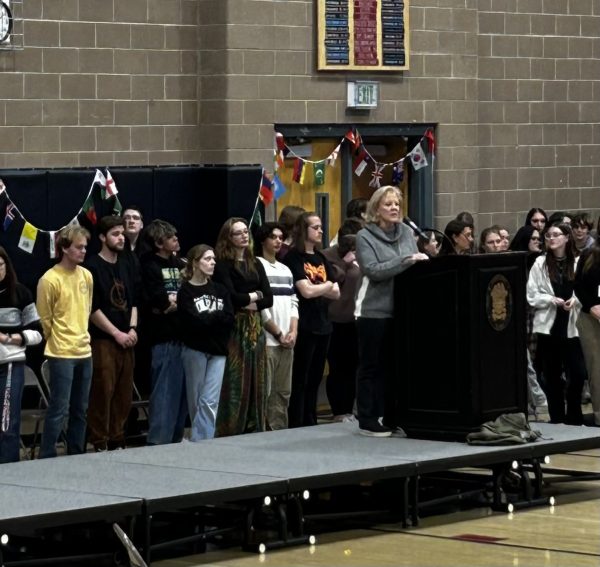The Service Industry’s Fall from Glory

Popular chains like Starbucks Coffee have become to-go only, eliminating the jobs and necessity of many staff members.
April 16, 2020
The past month and a half have proven detrimental to many areas of daily life. Movie theatres have gotten emptier and emptier, sidewalks have become deserted, tourist attractions have almost completely dried up, and most riveting of all, restaurants’ seating areas have been closed off. Virtually the entire service and food industry has been squished down to carry outs, drive-thrus, and delivery, with seating areas left behind in the past for the time being.
With restaurants mostly cleared out, revenue has become hardly achievable. Many waiters/waitresses, bussers and hosts/hostesses have been laid off or can’t get shifts anymore. Restaurants now (if open) are only getting income through managers and cooks, often leading to smaller paydays and a significantly diminutive amount of customers. Restaurants that were struggling before Covid likely have already closed their doors for good. The entire foundation of the restaurant industry — the people — is crumbling swiftly around those businesses still barely afloat.

Small restaurants and businesses have been desolate from concern over Covid-19, as well as stay at home orders.
The merciless chaos and discord brought to the table by Covid-19 has done more than shut down the average person’s favorite eatery temporarily. With NY restaurant revenues falling below 30% decreases as early as March 15 (a number that would continue to fall across the country), small food establishments have been forced to lay off workers in mass, with an estimated 5-7 million to be laid off by the end of stay at home orders.
With the stage set, there’s no telling how the restaurant industry plans to recover from these closures or how the American economy will look emerging with so many unemployed citizens. For the time being, it seems as if service workers are waiting on stimulus checks or seeking new work, but many of those who sought careers are struggling to pay for groceries or bills.

Abroad, restaurants are faring just as poorly as in the U.S, evident by this diner in Yuhuan, Zhejiang.
For the high schoolers working as bussers, hosts/hostesses and even servers, it is less detrimental, but still a unique and frustrating experience. Brian Elander, a busser at Willow Creek and a junior at Dakota Ridge, is in the dark about what’s going on at his restaurant.
“They won’t tell us support staff anything at all,” Elander said, “They just aren’t giving out any shifts and there’s no more paydays.”
While the world battles on, only time will tell how restaurants and the service industry will fare in the end. With so many aspects of modern life changing, it’s possible the service part of the restaurant industry could fade into the past, replaced by delivery, Door Dash, or other ways of fine dining accessible by the average person. Alex Richardson, another junior at Dakota and a hostess at the Fort Restaurant, had this to say about the future of her job. “I used to think there would be this huge boom when we open up again,” Richardson said. “Now, however, I feel like there will be many restrictions that slow down business when we open up, and if the industry returns to normal, it will be a slow, methodical process.”












